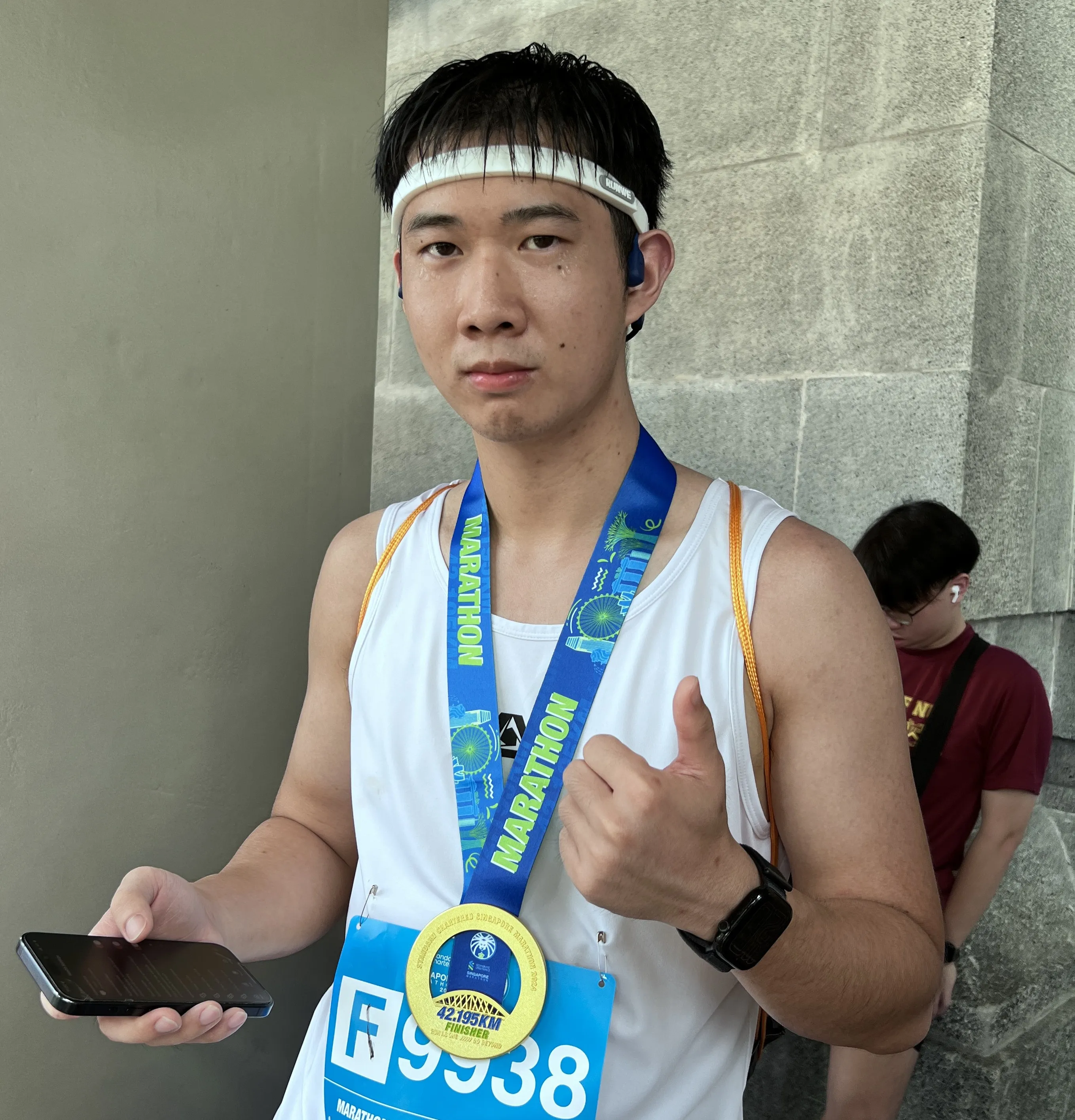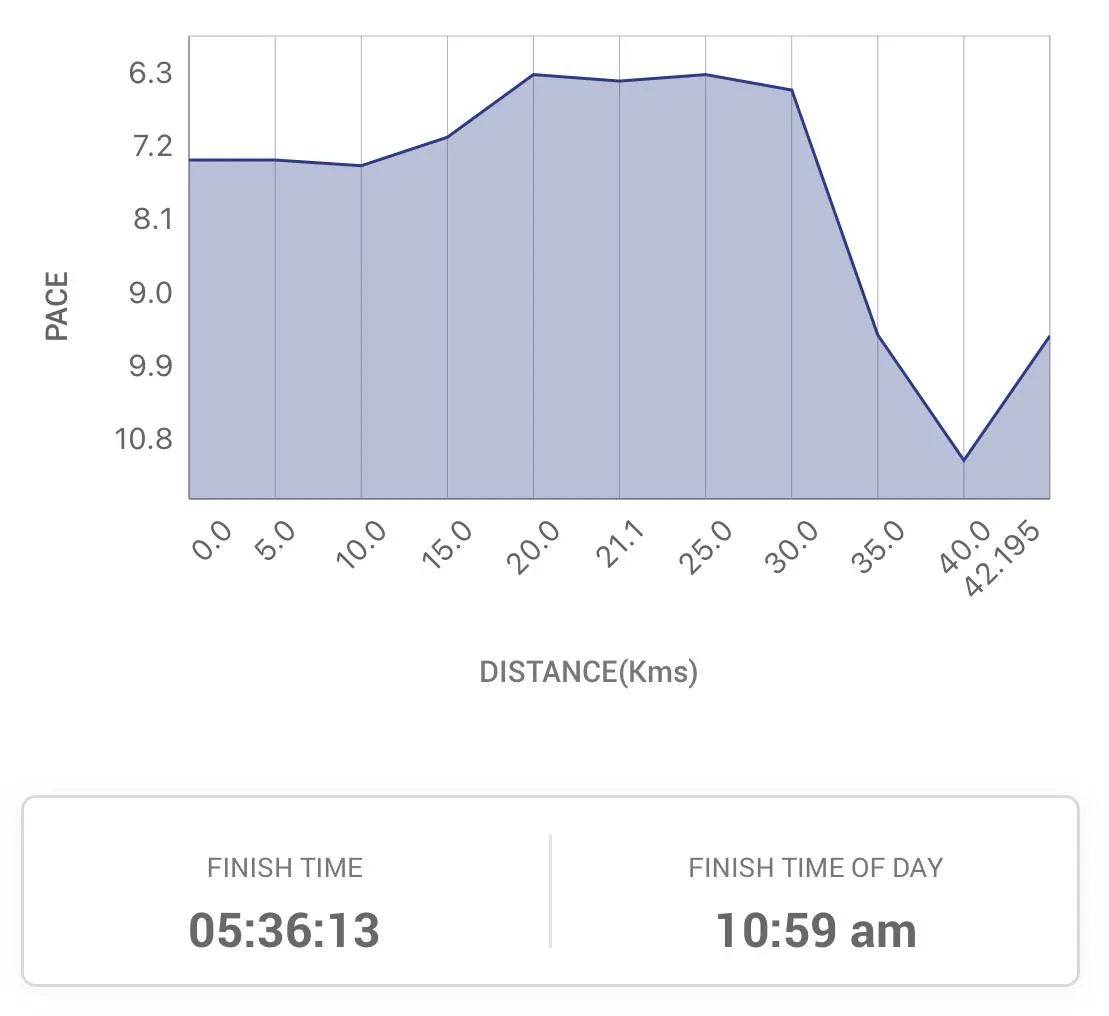From Novice to Marathoner: Lessons from My First 42km
Many of us probably have heard something along the lines of “life is a marathon, not a sprint”. Well, I took that quite literally and ran my first marathon on 1 December 2024. In this blog, I will share my marathon experience, what I have learnt from it, and reflections on my future goals.

Running a marathon was never on my bucket list. I wasn’t a runner, and any running I did in the past was strictly for passing school physical exams. However, at the start of this year, the documentary Breaking 2 popped up on my feed, and I was deeply inspired by Eliud Kipchoge and his relentless spirit of pushing the limits. That inspiration led me to take up running as a hobby, setting the ambitious goal of completing a marathon by year’s end.
My training began in late March. Though I had been running casually on and off for years, I had never run more than 5km at a time. I knew that completing a marathon required more than just discipline and determination; I needed a structured training plan. After some research, I discovered a highly recommended book: Daniel’s Running Formula by Jack Daniels. This book became my coach for the next 10 months. It wasn’t just scientific in its approach, it was also highly motivational. A quote that particularly resonated with me was: “A good run or race is never a fluke. Sometimes a bad run is a fluke, but if you do run a great race, it is because you are capable of it.” This was a constant reminder of the greatness we’re all capable of achieving when we put in the effort and believe in ourselves.
The book also taught me the importance of different types of runs—easy runs (E), tempo runs (T), interval runs (I), long runs (L), and recovery runs. At the start, I avoided jumping straight into the marathon plan since it required a base level of fitness I didn’t yet possess. Thankfully, Chapter 8 offered plans tailored for building fitness: the White Starter Plan, Red Intermediate Plan, Blue Advanced Plan, and Gold Elite Plan. The Red Intermediate Plan was perfect for me - a 16-week regimen designed to build endurance and speed through a mix of easy, tempo, interval, and long runs. After completing the 16 weeks, I was ready to tackle the 2Q marathon plan in Chapter 16.
Everything was progressing smoothly, and I was exceeding expectations. However, my first major setback came at the start of the 2Q plan. A school project took me to Cambodia, and I returned to Singapore sick, causing my fitness levels to drop significantly. The jump in weekly mileage for the 2Q plan proved too steep for me. Instead of switching to an easier plan, I made the mistake of devising my own. My pride prevented me from admitting I was still a novice runner up against the challenge of a marathon. This mistake came back to haunt me. Before race day, the farthest I had ever run was 25km - barely over half the marathon distance. Despite knowing I wasn’t adequately prepared, I decided I would finish the race even if it meant walking.
On race day, I felt both excited and nervous. Thousands of runners gathered at the starting line, and the atmosphere was electrifying. At 5:22 AM, I crossed the starting line and began my journey. The first 8km felt effortless. Running alongside a friend who was doing the half marathon, we maintained an easy pace. After the route diverged and I was on my own, fueled by adrenaline, my pace gradually increased. I managed to sustain this pace until around the 28km mark.
At that point, reality struck. I had never run this far, especially at what turned out to be a threshold pace which is faster than the marathon pace I was supposed to maintain. Cramps began setting in, forcing me to slow down. Even salt pills couldn’t fend off the cramps. At 29km, it became clear that running would only worsen the cramps, leaving me unable to finish. I had to resort to walking, but even that was painful due to the cramps and blisters on my feet. Feeling demoralized as others passed me, I considered giving up countless times. Yet, I was determined to cross the finish line. Limping and in pain, I finished the race in 5 hours and 36 minutes. Although I knew I could have done better with proper training and pacing, I was proud of my determination to finish.

The marathon was a humbling experience that taught me many lessons.
Know you are limitless but also know your limits
The marathon reminded me that we’re all capable of greatness. Anyone can run a marathon with proper training and belief in themselves. This experience has given me the courage to try new things that might initially seem impossible. At the same time, it taught me to respect my limits. I should have switched to an easier plan when I realized the 2Q plan was beyond my capabilities and paced myself better during the race.
The importance of preparation
Preparation is key to success, whether it’s for a job interview, an exam, or a marathon. My lack of preparation kept me from running at my desired pace, yet the preparation I had done was what allowed me to finish the race. Without those 10 months of training, I wouldn’t have been able to complete even a walking marathon. Never underestimate the value of preparation.
With the marathon behind me, I am looking forward to new challenges. I plan to run a sub-4:30 marathon in 2025 and am confident I can achieve this with the right training and preparation. I’m also excited to explore other new experiences. The marathon has shown me that greatness lies within all of us; we just need to put in the work and believe in ourselves. I hope my story inspires you to try new things and push your limits. See you at the Standard Chartered Singapore Marathon 2025!